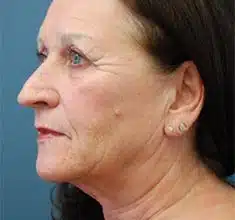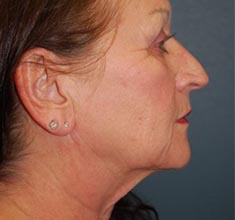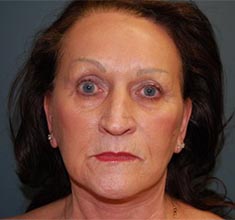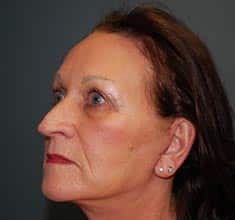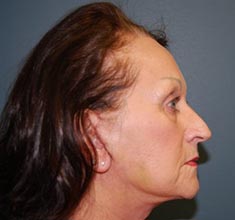What is a Facelift and Neck Lift?
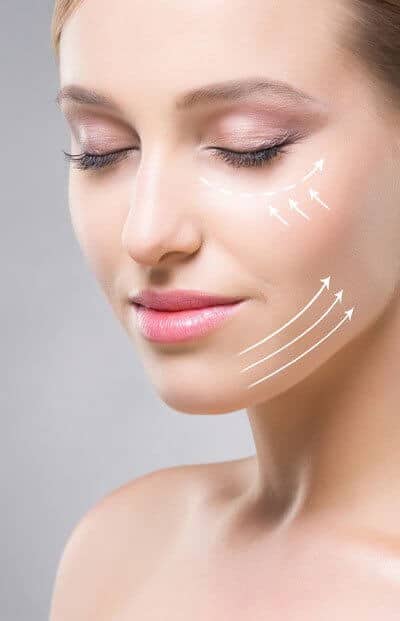 As you get older, your face’s skin and soft tissues lose their elasticity, and vertical folds and fat deposits may appear around the neck. Deep creases and wrinkles may form between the nose and mouth, and crow’s feet become visible at the corners of the eyes. The jawline is no longer straight, and jowls begin to develop. Your skin can make you look older than you are or feel. Excessive sun exposure, stress, pollutants, and genetic factors can contribute to premature aging of facial skin.
As you get older, your face’s skin and soft tissues lose their elasticity, and vertical folds and fat deposits may appear around the neck. Deep creases and wrinkles may form between the nose and mouth, and crow’s feet become visible at the corners of the eyes. The jawline is no longer straight, and jowls begin to develop. Your skin can make you look older than you are or feel. Excessive sun exposure, stress, pollutants, and genetic factors can contribute to premature aging of facial skin.
A facelift, medically known as “rhytidectomy,” can reduce these signs of premature aging. A facelift smoothes the loose skin on your face and neck, tightens underlying tissues, and removes excess fat, resulting in a firmer, fresher appearance. The areas addressed are the middle and lower parts of the face, including the neck, jowls, and cheeks; facelifts do not treat the upper portion of the face, which is accomplished with a forehead lift.
Types of Facelifts
In reality, there is not just one standard facelift procedure but a range of facelift techniques that vary based on the extent of improvement that is desired and the specific areas that are targeted.
The full facelift or SMAS (superficial musculoaponeurotic system) lift corrects the mid-face, jowls, and neck, allowing excess skin and fat to be removed. This is considered the standard procedure when it comes to facelifts.
A neck lift concentrates on jowls, loose skin on the neck, and fat under the chin.
A mid-face lift (or “cheek lift”) restores youthful vitality to the mid-face, lifting the cheeks and smoothing fine lines to achieve a natural, rejuvenated look without the need to undergo a full facelift. Mid-face lifts can be the perfect solution for reducing puffiness under the eyes, improving the contour of the upper cheeks, and correcting “smile” or “laugh lines” (nasolabial folds).
The so-called mini facelift may be recommended for patients who do not have advanced signs of aging. The mini facelift plastic surgery procedure targets the lower face and upper neck and will not affect the mid-face area. Basically, a mini-facelift lifts tissue and trims skin, but less dramatically than a full facelift.
How is a Facelift Performed?
During a facelift procedure, general anesthesia or IV sedation will be administered to ensure the patient stays asleep throughout the duration of the operation. On average, facelift and neck lift surgeries take about two to three hours to complete, depending on the extent of the procedure.
To perform a full facelift, Dr. Deutsch will begin by making an incision in the temple area, just above the ear, and then continue down around the earlobe, circling up into the groove behind the ear, before returning into the hair of the scalp behind the ear. (The incision pattern usually follows the hairline or natural skin creases, so it does not normally show after surgery.) Alternative incision patterns may be made, depending on your particular situation. If the neck area also needs to be tightened, a small incision will be made underneath the chin.
Once the incisions are made, Dr. Deutsch will remove excess skin, and liposuction may be performed on the neck and jowls. He then repositions and tightens the remaining skin and underlying muscles. If volume needs to be restored to the face, a fat transfer procedure may be performed as well. Lastly, the skin is re-draped over the face and the incision is sutured.
After surgery, the head is loosely wrapped in a compression garment or bandages to minimize swelling and bruising. Small drainage tubes will be placed on your head, where they will be left for 24 hours, to drain any blood or fluid that collects.



